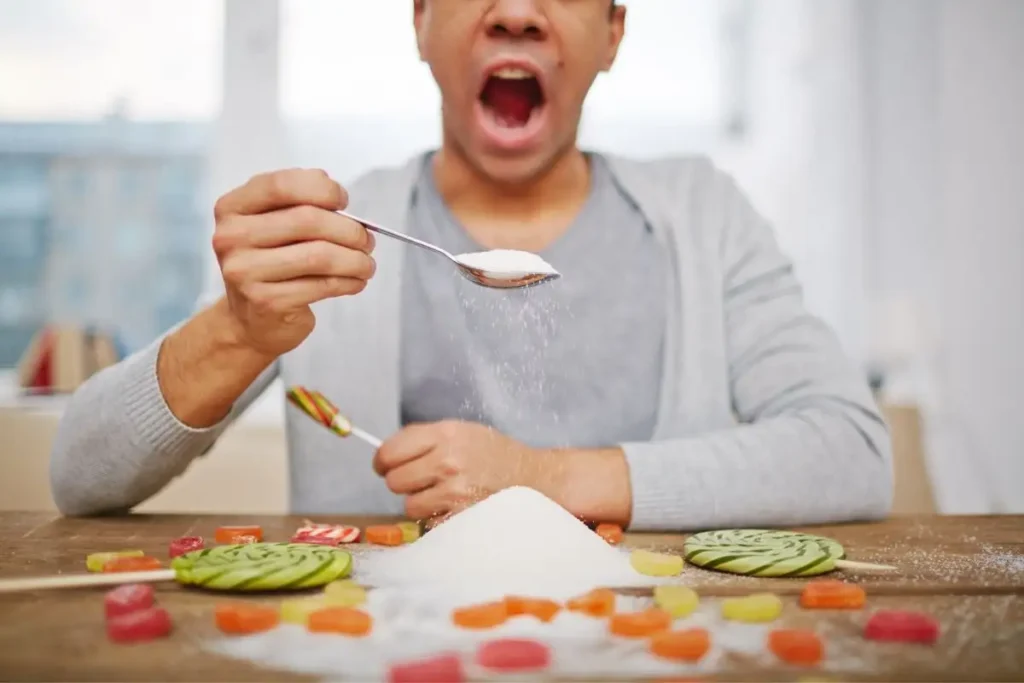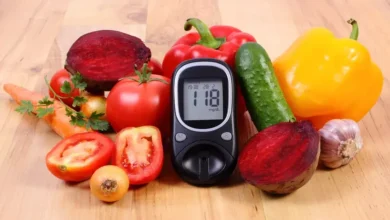
The World Health Organization (WHO) recommends that the intake of added sugars should not exceed 10% of daily calories, ideally limiting it to 5% (about 25 grams or 6 teaspoons). The problem is that much of the sugar we consume is hidden in products that we wouldn’t even consider sweet.
Light, low-fat, and even some condiments and sports drinks are loaded with sweeteners to compensate for lost flavor or to act as preservatives. Knowing these “trap foods” is the first step to reducing the consumption of added sugar and improving metabolic health.
READ ALSO:
- Quick Exercise for Lower Back Pain Relief: Simple Moves That Work
- Does Running Help You Lose Weight? How to Start and Progress Without Losing Your Breath
Follow our PAGE
Savory Foods and Condiments: Unexpected Traps
Many products we use daily to flavor meals are, in fact, vehicles for unnecessary sugar.
1. Barbecue (BBQ) Sauce
BBQ sauce is notoriously one of the most sugary condiments. A serving of just 2 tablespoons can contain up to 9 grams of sugar, meaning about 33% of its weight can be pure sugar. If you use the sauce liberally, consumption skyrockets.
2. Ketchup
Although it is a staple food in many homes, ketchup also contains a surprising amount of sugar. A single tablespoon has nearly 4 grams of sugar, equivalent to almost 1 teaspoon.
3. Spaghetti Sauce (Industrialized Tomato)
Many ready-made tomato sauces, even the savory ones, contain added sugar to neutralize the acidity of the tomato and improve flavor. To avoid unwanted sugar, the ideal is to make the sauce at home or check the label and choose those where sugar is listed last on the ingredient list.
4. Canned Baked Beans
This is a savory food that, surprisingly, has about 5 teaspoons of sugar per cup (254g). Opt for low-sugar versions to halve your intake.
“Healthy” and Low-Fat Products
The “low-fat” label or a reputation for being “healthy” can conceal large amounts of added sugar.
5. Low-Fat Yogurt
To compensate for the removal of fat, which provides flavor and texture, manufacturers add large amounts of sugar. A single cup of low-fat yogurt can contain over 45 grams of sugar—exceeding the daily limit recommended by the AHA (American Heart Association) for both men and women. Choose full-fat or plain yogurts and add fresh fruit.
6. Granola
Granola is often seen as a healthy and fitness food. However, commercial mixtures bind the oat flakes with honey, syrups, or other sugars, turning it into a caloric and sugary bomb. 100 grams of granola can contain up to 7 teaspoons of sugar. Look for versions with low added sugar or make your own mix.
7. Cereal Bars and Protein Bars
Many of these bars are, in practice, the equivalent of a disguised candy bar. They contain little or no fiber and protein, and are loaded with sugary syrups to improve palatability.
Beverages and Juices: The Biggest Added Sugar Villain
Liquid sugar consumption is one of the biggest contributors to excessive intake, as the body does not process liquid calories the same way it processes solid ones.
8. Sweetened Fruit Juice
Although fruit juice contains vitamins, most industrialized juices have as much added sugar as a soda. The fruit’s fiber is removed, which accelerates the absorption of sugar. Prefer whole fruit or 100% juice in small portions.
9. Sports Drinks
These drinks are designed for elite athletes during intense and prolonged exercise. A standard bottle can contain over 30 grams of sugar. For most people, water is the best option for hydration during exercise.
10. Iced Tea and Flavored Coffee
Many commercial iced teas and flavored coffee beverages from major chains are sweetened with syrups, resulting in over 11 teaspoons of sugar per serving, which is a very high daily intake.
Other Surprises on the List
- Chocolate Milk: Adds about 12 grams of extra sugar to nutritious milk.
- Premade Soups: Many brands use sugar to mask saltiness or balance flavors.
- Breakfast Cereals: Even those marketed to adults are often high in sugar (about 3 teaspoons per small serving).
- Canned Fruit in Syrup: Processing removes fiber and adds a lot of unnecessary sugar to the food.
- Premade Smoothies: Can contain over 50 grams of sugar per serving, due to the use of syrups, juices, and ice cream.
The Crucial Importance of Reading Labels
The best way to avoid hidden sugar is to prepare your meals at home. However, when buying packaged foods, it is essential to read the ingredient list.
What to look for:
- Sugars Under Various Names: Watch out for names like high-fructose corn syrup, barley malt, dextrose, maltose, molasses, fruit juice concentrates, honey, or any ingredient ending in “-ose.”
- Ingredient Order: If sugar (or any of its disguises) is listed at the top of the list, it is one of the most abundant ingredients in the product.
Moderate sugar consumption is acceptable, but regular intake of large amounts, often hidden, is strongly linked to diseases such as obesity, type 2 diabetes, and heart disease. Awareness is your best defense.

Hello! My name is Alan Teixeira and I am passionate about helping people live healthier, more balanced lives. From mindful eating to daily habits that promote physical and mental well-being, I believe that small, consistent changes can lead to powerful transformations.
I created this blog to share practical tips, reliable information, and thoughtful insights that can inspire you to take better care of yourself—with balance, mindfulness, and positivity.
If you are looking to improve your health, nourish your body, and build a lighter, more fulfilling routine, you are in the right place. Welcome!

